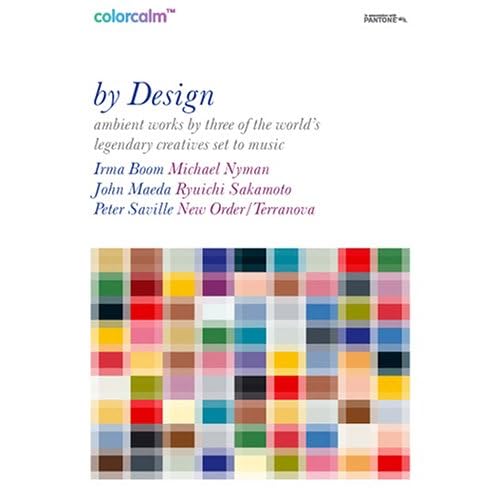Graphic designers, illustrators, artists, and advertisers will continue delivering all of the persuasive, informative, narrative, and poetic visual stimuli we see every single day, but others may seek out inventive ways to create shelter from it. They will fabricate new media to help consumers escape from new media, where we turn off (or worse yet, hide) from the abundance of stimuli.
Contrary to designers’ beliefs, the solution to information anxiety may not lie in better visual communication, but rather, escaping it all together. Getting something accomplished during your 9-5 job might require not just your own cubicle where you listen to music through your iPod headphones, but rather your own pod, where you sit enclosed and sheltered from a co-worker’s all-day-iTunes-Led-Zepplin marathon. Selecting the right restaurant during our lunch hour has become just as trying, with televisions plastering many walls and the clicking customer adjacently tapping on a Blackberry. One TGI Friday’s I visited in Orlando, Florida, had televisions built into every booth. And if you want to escape the HD screens, ringing cell phones, and iPod ambiance you encounter at the local gym after work, why not reserve your own isolated workout room with noise-cancelling walls?
William Hurt’s character Dr. Eddie Jessup took isolation to a new level in the 1980 film Altered States, when he experimented with sensory deprivation tanks to achieve heightened awareness, crossing physiological planes. Following that film’s popularity, floatation tanks became the ideal method for relaxing one’s body, and some athletic teams such as the Dallas Cowboys and Bill Bergey of the Philadelphia Eagles used them to recover from injuries and strenuous play. Then, as much as now, floatation tanks and sensory deprivation appear luxurious (although bordering on voodoo to some) but in the future, we may require such equipment to fully shield ourselves from deafening noises and bombastic graphics surrounding us.
Trailer from the 1980 film Altered States with sensory deprivation altering Dr. Jessup, for better and worse (youtube)
Technology and visual media have become so integral to our livelihood and communication that we encounter them almost constantly with little to no break until we sleep at night. And with mobile communication proliferating our culture, everyone’s talk is everyone’s talk. The days of purchasing the 30 foot telephone extension cord so you could have a private conversation in the bedroom or basement—away from your parents or co-workers—is a thing of the past. Seeing others chat, text, talk, or surf is as cool as doing it yourself these days.
We all know our bodies need to slip away from the jabber-twittering onslaught, but sometimes we need reminders. My reminder happened in a client’s small waiting room devoid of magazines, brochures, artwork, and disruptive noise. As luck would have it, I left my mobile phone in the car, and did not have the added tension of its ringer possibly going off in my pocket for the thirty minutes I sat waiting. This small room was also equipped with a white noise machine, delivering a soothing sound. We’ve each had moments like these, and sometimes they happen on accident; sometimes they happen purposefully. To free myself from graduate school rigors and stress, I would frequent James Turrell’s Skyspace, located in the Henry Art Gallery daily. Those who have experienced the Skyspace, or any of Turrell’s other light sculptures, can appreciate the calming effects. Will the day come when we have our own meditation room built into our home? Or even more extreme, will some of us choose to live in a minimalist environment, similar to the one illustrated in BusinessWeek below.
Could this apartment featured in BusinessWeek comfort our strained nervous systems?
The science fiction dreamer would turn every blank space in that apartment into a digital screen with multi-touch technology, but I see it a different way: it’s about escaping. Entering the vacuous apartment illustrated in BusinessWeek, sitting in a quiet waiting room for a client, or gazing out of Turrell’s Skyspace can help us take time off—even momentarily—and initiate the parasympathetic nervous system’s rest and digest process. As humans withstand more and more stimulation and interaction, through computers, hand-held devices, or televisions, we may need a greater distance from that media to relax and initiate the parasympathetic responses. Taking 30-40 minute breaks out of doors may not be good enough because our entire nation will be one big networked village, full of mass media messages and chitter-chatter-tweeters.
Creating spiritual escapes and artificial habitats that isolate us from stimuli will require artists, designers, color theorists, or audio designers to partner with architectural, interior, or exhibition designers. James Turrell is just one artist who has taken on that challenge. Designers such as John Maeda and Peter Saville also experimented with spirituality in the DVD ColorCalm: By Design: juxtaposing sound with light for the comfort of your living room or office computer.

DVD ColorCalm: By Design
Because the battle to win consumer and audience attention grows bigger and bigger, covering more and more space, soothing our senses will require more extreme measures than visiting an art gallery or plugging in a colorcalm DVD. The cold war brought about a rise in bomb shelters. Crime sprees during the 1990s pressured homeowners to install panic rooms. What residential innovation will we see over the years, when the ever-growing information superhighway becomes pervasive? Futurists see holography, hover cars, video phones, space travel, and touch-screen computing this century or next, but I believe sensory deprivation rooms will reside in every home.







The irony about using the floatation tank for sensory deprivation is that you typically end up with enhanced creativity, similar to the bat that compensates for poor vision with exceptional hearing.
So if you want to become more effective at creating the media, art, advertising, etc. that is bombarding us all, you can accomplish this by taking some time out to deprive your senses and expand your mind!
On Dec.16.2008 at 10:00 PM